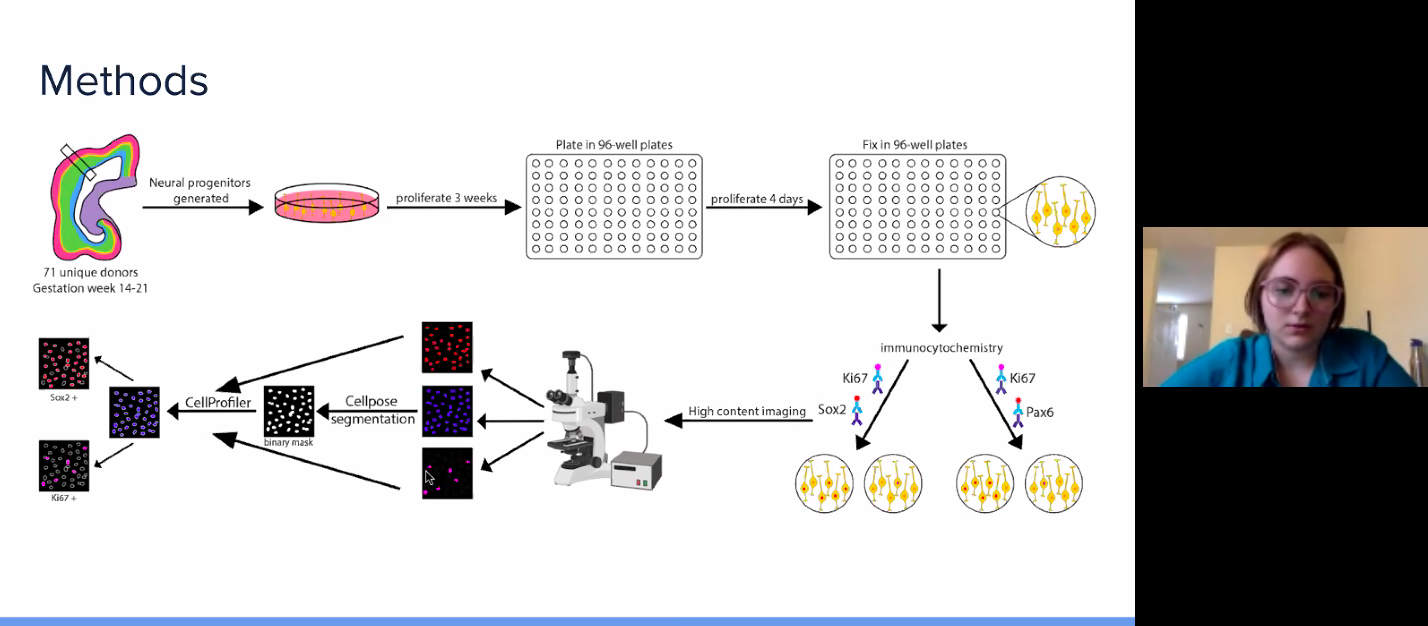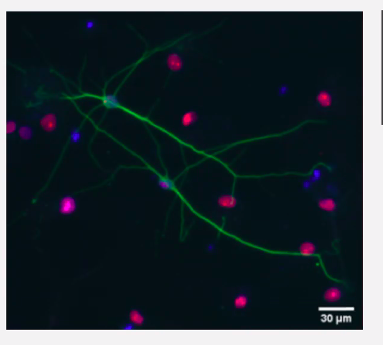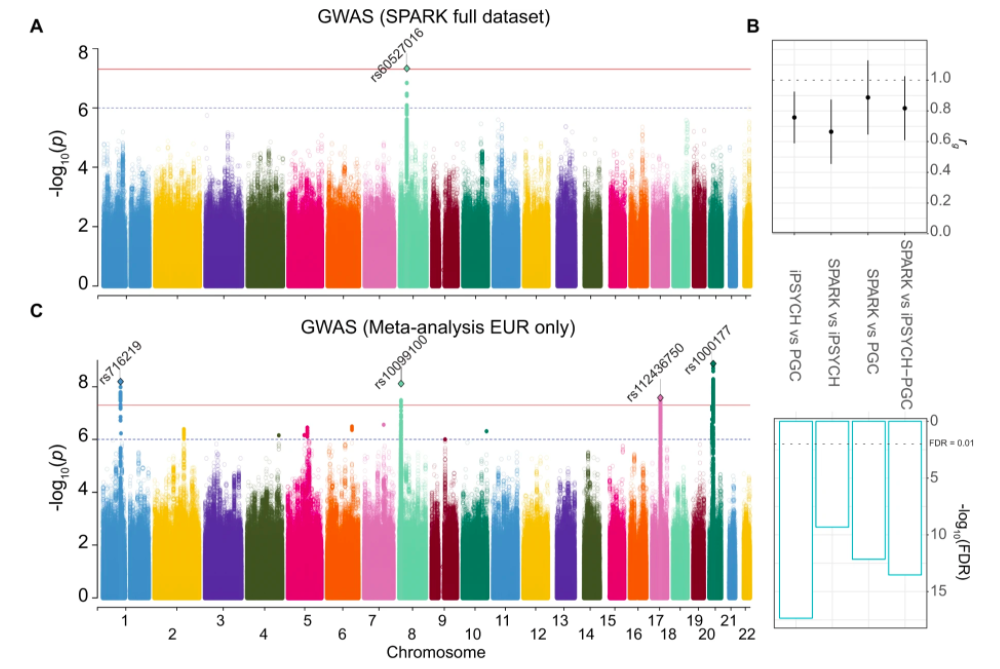Oleh Krupa led a project to develop a tool used for analyzing tissue cleared images. He imaged WT and Top1 cKO mice, getting beautiful cellular resolution images of the entire brain. Using the tool he developed, he was able to accurately quantify all nuclei in the cortex, accurately count individual cell types, and identify differences in cell type proportions and density between the genotype groups. This is a tool that we hope will be widely useful to the research community for studying genetically mediated differences in brain structure!
Preprint on identifying causal genes associated with traits
Both GWAS and eQTLs often have allelic heterogeneity - multiple independent loci close to each other influence the same trait/gene. You can use this information as a natural experiment to infer causality of a gene in trait levels. Do slight wiggles in levels of a gene expression lead to slight wiggles in the level of a trait? If so, that’s evidence for causal function of the gene in the levels of the trait. Led by Mike Love, we developed a tool called MRLocus that integrates eQTL and GWAS to identify causal genes mediating trait differences. Read more about it here: https://www.biorxiv.org/content/10.1101/2020.08.14.250720v2.full.
Jordan Valone starts grad school at UNC
Jordan Valone, a research technician who has been working with us for about a year, started graduate school today here at UNC in the BBSP program. Good luck Jordan and thanks for all of your work!
GWAS of Autism Spectrum Disorder in SPARK published in Translational Psychiatry
We completed a GWAS in the SPARK dataset , identifying a new genome-wide significant locus and performing some validation studies to identify causal variants within an associated locus. The work was published in Translational Psychiatry: https://www.nature.com/articles/s41398-020-00953-9.
Pre-print on the genetic architecture of brain structure
Human brain structure traits have been hypothesized to be broad endophenotypes for neuropsychiatric disorders, implying that brain structure traits are comparatively ‘closer to the underlying biology’. Genome-wide association studies from large sample sizes allow for the comparison of common variant genetic architectures between traits to test the evidence supporting this claim. Endophenotypes, compared to neuropsychiatric disorders, are hypothesized to have less polygenicity, with greater effect size of each susceptible SNP, requiring smaller sample sizes to discover them. We compared polygenicity and discoverability of brain structure traits, neuropsychiatric disorders, and other traits (89 in total) to directly test this hypothesis. You can find the pre-print here: https://www.biorxiv.org/content/10.1101/2020.07.17.208843v1.full.
Grace Morningstar receives Honors in Biology
Grace Morningstar successfully completed her undergraduate honors thesis in Biology. Her thesis work was entitled “Investigating the mechanism of a common genetic variant associated with human cortical surface area”. Congrats Grace and we wish you best of luck in your future scientific career!
Shivam Bhargava featured in Undergrad Newsletter
Shivam Bhargava, an undergraduate student who works on iPSCs in the lab, was featured in the Psychology & Neuroscience newsletter for his research in our lab. Congrats Shivam!
Congratulations to Jessica Mory and Ellie Hadden-Ford for completing their Undergraduate Honors Theses
Jessica Mory and Ellie Hadden-Ford are undergraduate students that have been working in the lab over 2 years. They both were enrolled in the Psychology & Neuroscience undergraduate honors thesis program. They worked on projects to culture and image human neural progenitor cells and their differentiated neuronal progeny through high content imaging. Both gave excellent zoom thesis defense talks (due to COVID) and wrote clear theses. The committees unanimously awarded each of them highest honors for their work. Congratulations to both of you and best of luck as you go on in your scientific career!



Virtual talk at Boston Children's Hospital
This is a talk on some of our recent work on discovering genetic variants associated with human cortical structure and how those variants influence gene regulatory potential in the developing brain. The talk was given on April 14, 2020 as a virtual seminar on Zoom due to the COVID crisis.
Dan Liang wins Dissertation Completion Fellowship
Congratulations to Dan Liang, who won the Dissertation Completion Fellowship! She’ll be finishing up her dissertation work this year on chromatin accessibility differences during human cortical differentiation.
Welcome to Felix Kyere, new neuroscience graduate student
We’re happy to have Felix Kyere, a graduate student in the neuroscience graduate program, join our lab for his dissertation work. Welcome Felix!
GWAS of Cortical Structure published in Science
As part of the ENIGMA consortium, we published a large study to demonstrate how genetic variation in humans impacts cortical structure. We identified 199 loci that were significantly associated with cortical structure by a stringent criterion. We also found that those genetic variants that influence adult surface area are enriched in genomic regions active in progenitor cells during neuronal differentiation well before birth. This is evidence in humans supporting the Radial Unit Hypothesis, put forward by Pasko Rakic in the 1980s. In addition, there were genetic correlations detected between cortical surface area and several traits including cognitive abilities and ADHD. This implies that genetic variants that impact cortical structure also impact cortical function. You can find our work published here. This is a huge collaboration and wouldn’t be possible without the joint work of literally hundreds of scientists. We started the ENIGMA consortium about 10 years ago, and this is our latest and greatest work. It’s particularly exciting because the structure of the cortex allows us to have human specific abilities and disruption of cortical structure is thought to cause neuropsychiatric disorders.
Pre-print posted on genome-wide association study in autism using the SPARK dataset
In joint work with the lab of Hyejung Won by joint postdoc Nana Matoba, we used the SPARK dataset to identify common genetic variants associated with risk for Autism Spectrum Disorder. We were able to replicate previous findings and also identify a new locus. For that new locus, we used a multiplex parallel reporter assay (MPRA) to identify a potential causal variant. We integrated this information with existing eQTL resources to identify genes of action for those variants. You can read more about this work in the pre-print here.
Biorxiv pre-print posted on genetic effects on chromatin accessibility during human neuronal differentiation
Dan Liang, a graduate student in the lab, posted a pre-print of our work on genetic effects on chromatin accessibility in cultured human neural progenitor cells. In this work, we identified thousands of common genetic variants that influence gene regulatory activity during human neuronal differentiation. We use this data to explain the gene regulatory mechanisms of several GWAS loci for neuropsychiatric disorders and brain relevant traits. The preprint can be found here.
Dan Liang wins a travel award to attend the World Congress of Psychiatric Genetics
Bioinformatics and Computational Biology graduate student won a travel award to attend the World Congress of Psychiatric Genetics meeting in Anaheim, CA. Her talk is entitled: “Genetic Variants Affecting Chromatin Accessibility During Human Neuronal Differentiation”.
Biorxiv pre-print posted on evolutionary genomics of human brain Structure
Together with Simon Fisher and Amanda Tilot, we just submitted a biorxiv pre-print on how genetic variation through our evolutionary history impacted modern human brain structure. Interesting findings include that variation present within human-specific regulatory elements present in the developing cortex, prior to birth, have a strong impact on adult brain structure. And, alleles with evidence of selective pressure over very recent time scales (in evolutionary history) have impacts on specific brain regions, including those involved in spoken language and visual processing. Read more about this work here: https://www.biorxiv.org/content/10.1101/703793v1.
Mike Lafferty selected to attend Human Genomics Summer School.
Michael Lafferty, BCB Graduate Student in our lab, has been selected to attend the Leena Peltonen School of Human Genomics program in Switzerland on August 18-22, 2019.
Brandon Le wins training grant
Congratulations to Brandon Le who won the Bioinformatics and Computational Biology T32 training grant!
Undergraduate Tianyi Liu meets the UNC Chancellor at Poster Presentation
Tianyi Liu presented his research at the Celebration of Undergraduate Research and got to meet the Chancellor of UNC! Tianyi looks very happy :)
The Stein Lab welcomes 2 new Bioinformatics and Computational Biology Graduate Students
We’re very pleased to welcome Brandon Le and Nil Aygun to our lab! Both are students in the Bioinformatics and Computational Biology graduate program and will work with us for their dissertations. Both also have both human neural stem cell culture and bioinformatics experience as well. Excited to have them on board! See more about them here.












